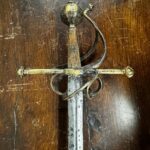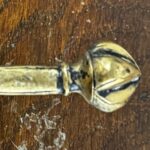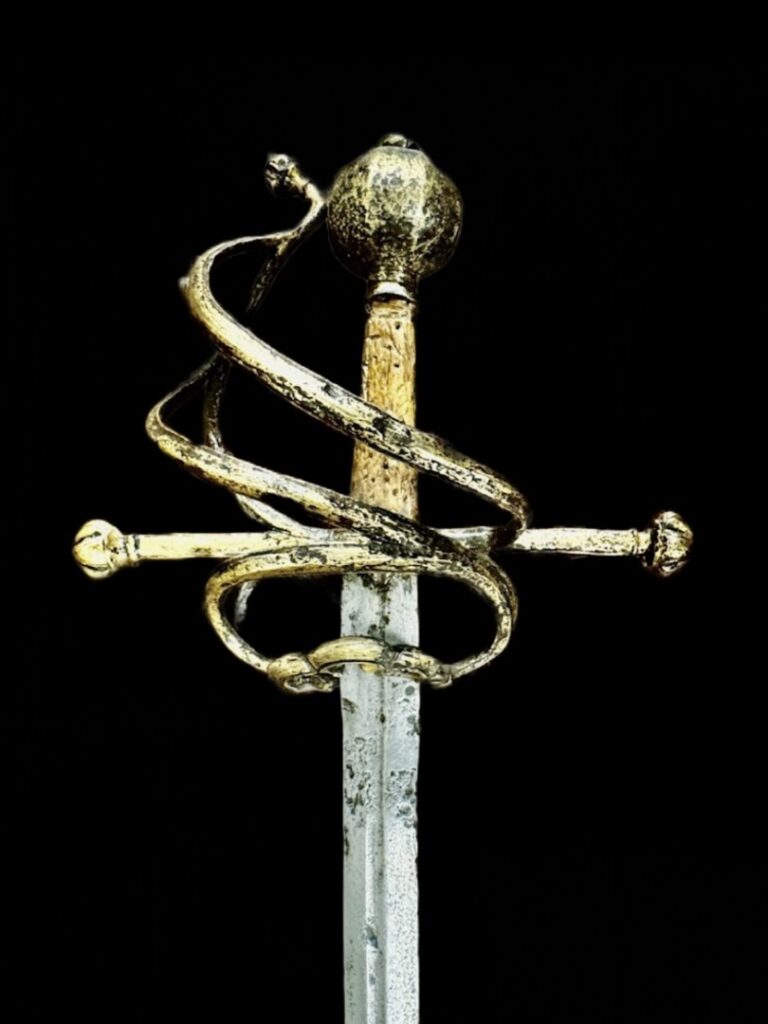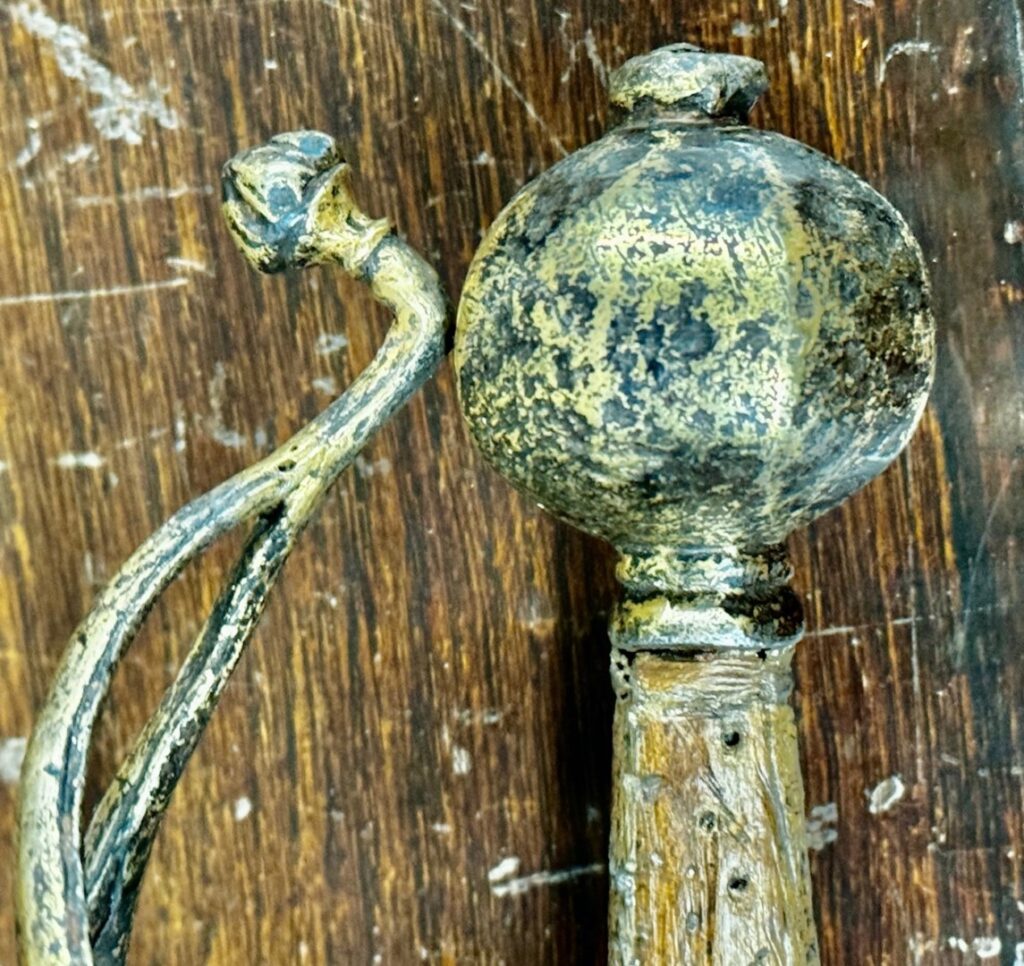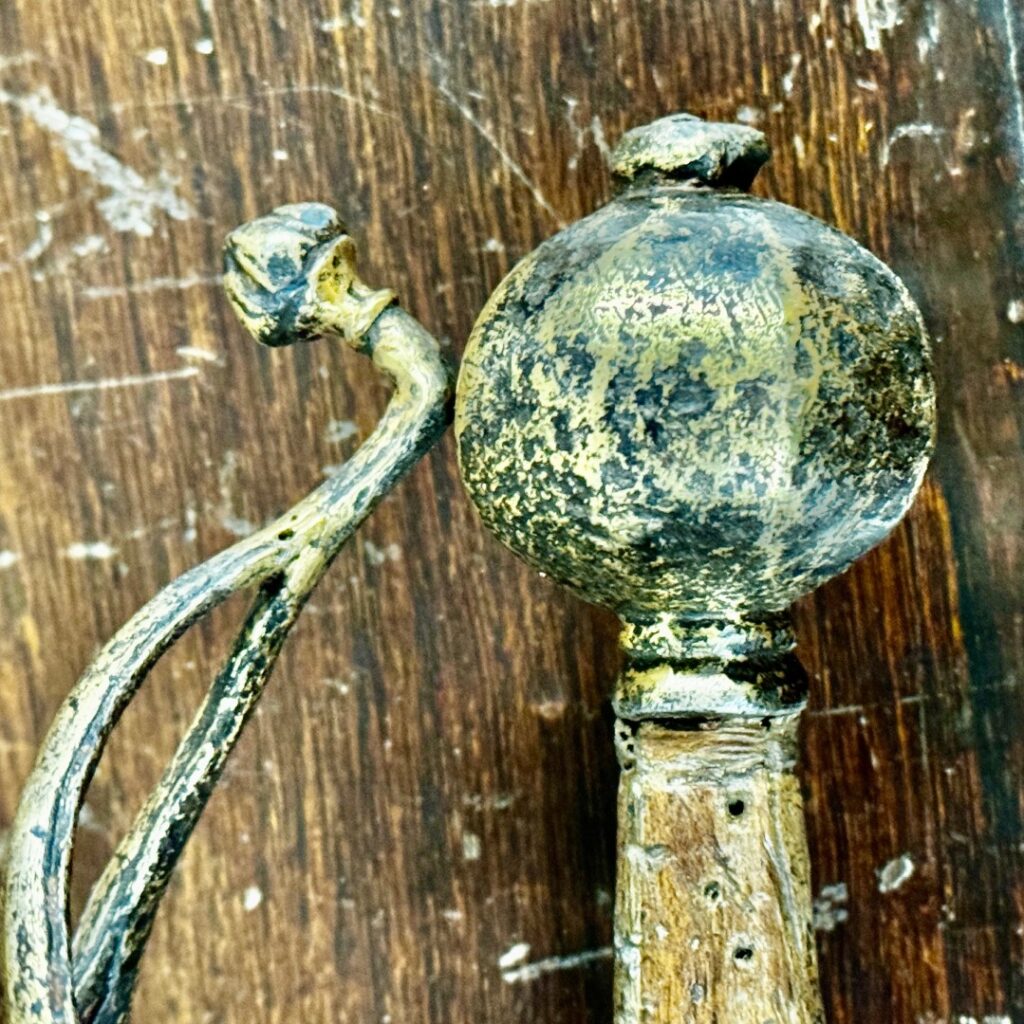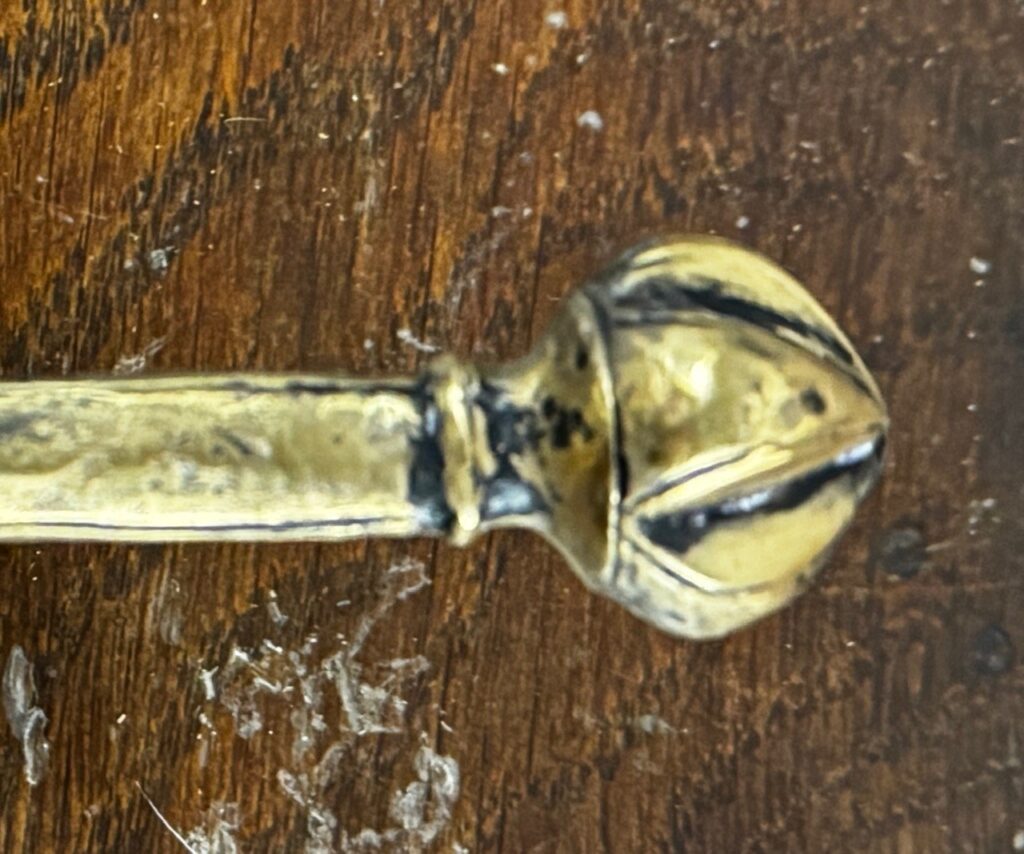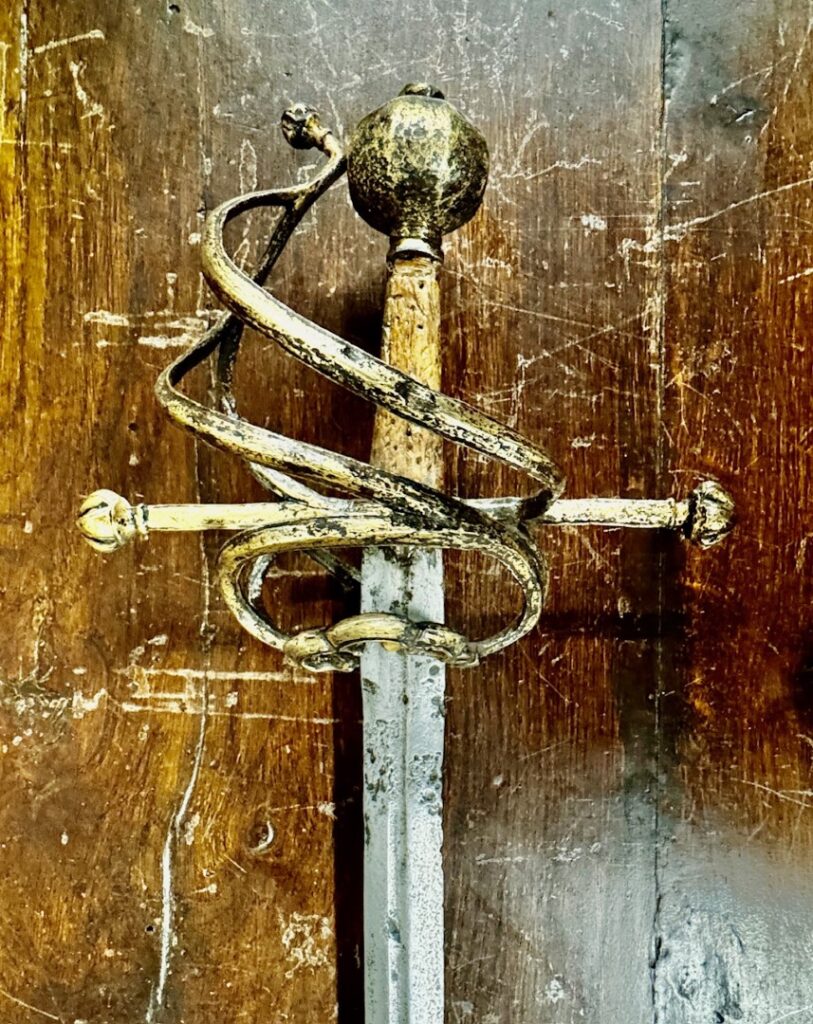1600) SUPERBLY CONSTRUCTED ELEGANT GILDED GERMAN RAPIER CIRCA 1540
Discussion: Under the Norman sword typology the sword under discussion is classified as a hilt 50. It was only used from 1530-1620. I am dating it circa 1540 because of the length of the blade, construction, comparables, and decoration.
Why was the rapier such an important part of Renaissance Europe?
In a day and age lacking appropriate policing, the private citizen was forced to protect himself from society‚ criminal dregs. The weapon of choice was the rapier from the middle of the 16th to the end of the 17th century. The rapier is a simple but highly effective sword against the non-armored. The rapier was primarily a thrusting weapon that could inflict serious injury to an adversary‚ vital organs with minimal effort. It was also an exceptional slashing and cutting weapon; however, the slash was not as lethal as the thrust. The slash was used more as a feint to set up a finishing thrust. The slash was also a dire warning to a would-be assailant of the horrors to quickly follow if he chose not to acquiesce. The rapier is almost undeniably of Spanish origin and is probably Spain‚ most significant contribution to the Renaissance arms race. A highly expensive, ornate rapier was the equivalent of a person in our day and age making a fashion or opulence statement by wearing very expensive jewelry, such as a Rolex or Audemars Piguet watch. Because fencing is more of a thrusting art, it became commonplace throughout Europe to have as long a blade as possible to obtain an advantage. This extravagance in length reached the point that municipalities passed statutes regarding the allowable lengths of blades. Those in violation had the misfortune of having their rapier‚ blades cropped at the tip at the city gate to comply. One example of these statues is from an English Royal Proclamation on March 17, 1557.
The French adopted the phrase “espee rapiere” by 1475, which later was shortened to simply “rapiere,” the English in 1505 spelled it “rappyer.” The Giles Duwes English/ French dictionary of 1532/3 adopted the rapier definition as “Spannyshe sworde” By 1550, the term rapier had been adopted to describe a slender, sharply pointed sword designed for thrusting, cutting, and slashing attacks. The rapier now consisted of a hilt protected by a hand guard.
Description: As previously stated under the Norman typology, the sword under discussion has a Hilt 50 with an inner guard 9, a spherical octagonal pommel type 15, straight swelling quadrilateral quillions tips, a short rectangular ricasso where the fuller originates and extends almost to the tip on both sides, the blade of a stiff diamond-section tapering to a point. Hilt-gilded, original wood grip core. Condition #2. Length: approximately 43.4 inches.
Comparables:
–Wallace Collection Cat. No. A576.
–The Odescalchi Collection, Rome Inv. # 426.
–Musee de l Armee paris Inv # p.O. 1904
Provenance: From a private European collection.
Conclusion: An elegant rapier which sadly has some pitting. The good news is that the slight pitting makes it very affordable. If this sword were in mint condition, it would sell for five times its asking price! Even worse would be captive in a museum long ago and now not available in the collectors market at an affordable price.
In summary: A very reasonably priced sword that has a lot of value for the money. If you ever wanted an early world-class rapier but don’t have a massive bank account, I urge you to ACT NOW and strike while the iron is hot. Even if you do not collect rapiers, it’s always good to have one in a collection because they were such an important part of Renaissance Europe. Priced to sell very quickly at under $4,000!!!*






